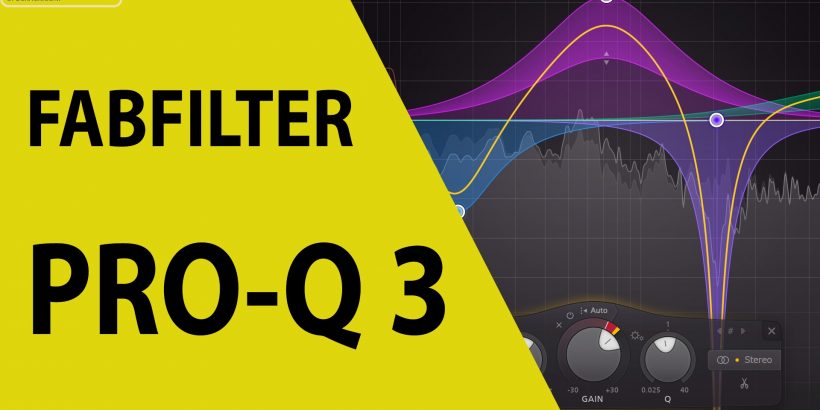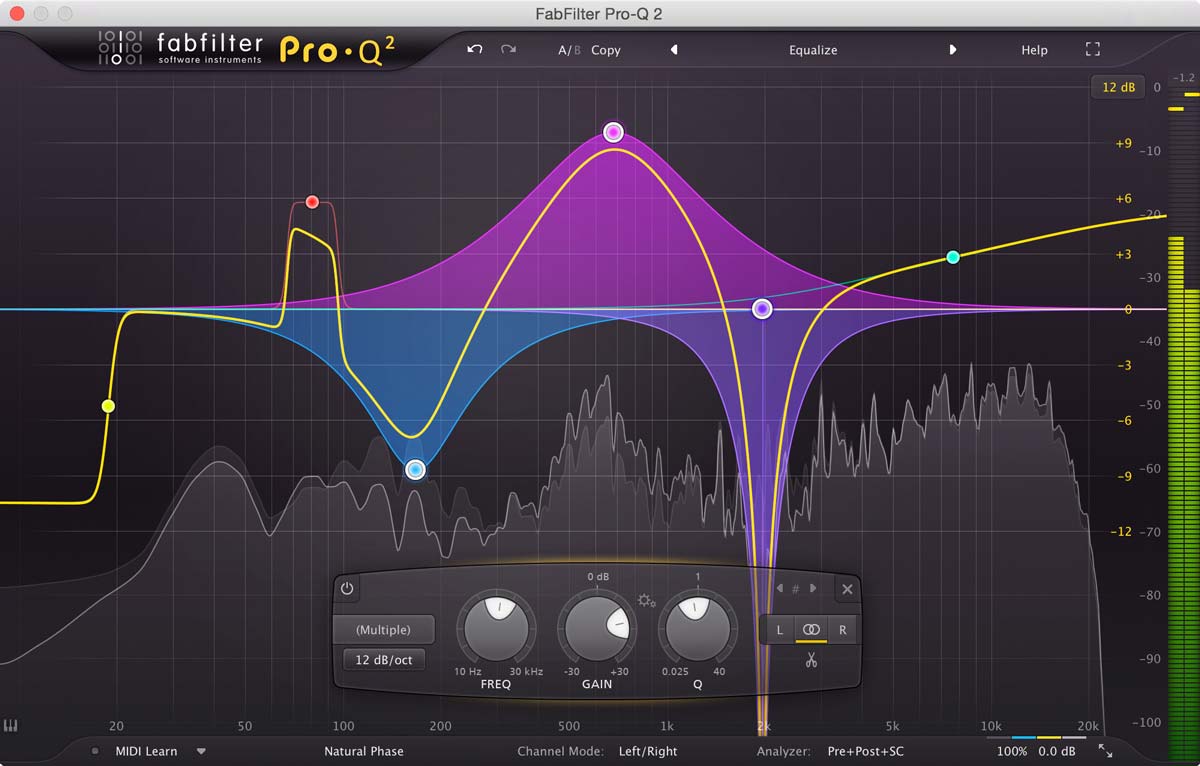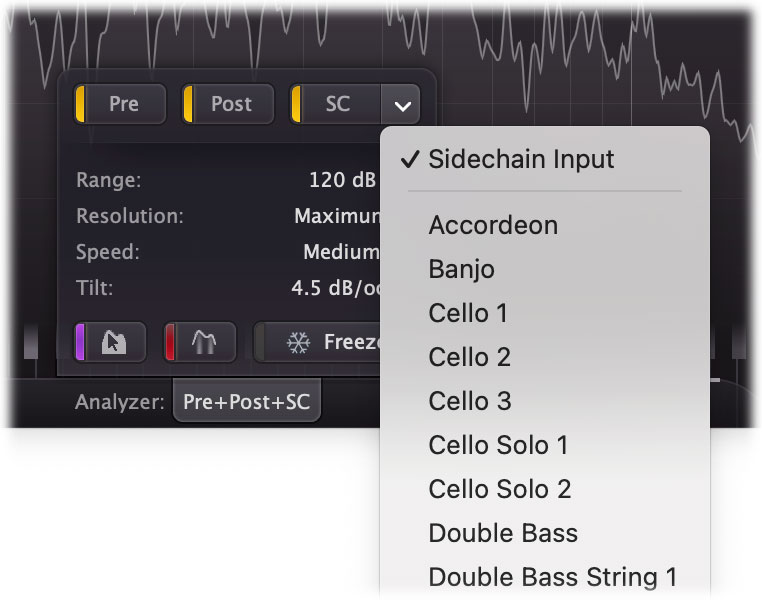
You can also display the spectrum of the side-chain input, if you’re using one (of which more in a moment), and in case all this extra information makes things cluttered, you can now resize the entire window to a choice of four dimensions, or zoom in horizontally on a particular area of interest. In Pro-Q 2, it’s enabled by default, with the input and output signals superimposed so that you can see exactly what your EQ settings are doing to the sound. In the original, real-time spectral analysis was available, but you had to enable it manually, and decide whether you wanted the input or the output signal to be displayed. The most telling improvements have been made in the area where Pro-Q already stood out from the crowd: its graphical user interface. One of my vanishingly few niggles, though, is that if for instance you change an existing band from a low shelving cut to tilt shelf mode, it ‘tilts’ the other way from what you’d expect, with a low-frequency boost and high-frequency cut. By setting a very low Q value, you can indeed ‘tilt’ the frequency response of a source in surprisingly effective fashion. Probably more useful more of the time, though, is the new ‘tilt shelf’, which is like having high and low shelving bands centred on the same point, with one cutting while the other boosts. The band-pass option is like having high- and low-pass filters centred on the same cutoff point, and is useful for isolating a small area of the frequency spectrum, for instance if you want to create a ‘telephone’ vocal effect. Pro-Q already offered the usual shelves and filters alongside its parametric and notch options, but Pro-Q 2 adds a couple of interesting ‘compound’ shapes. Another novelty is a ‘Natural Phase’ mode which is said to match the phase response of analogue EQ designs very accurately in most practical situations I found it hard to tell the difference, but it is said to help preserve audio quality especially when using very high Q settings. The range of Q values available in Pro-Q 2 also goes further into the realms of vertiginous steepness than the original. This enables ‘Gain/Q interaction’, a common property of some analogue EQ designs whereby the bandwidth narrows as more boost or attenuation is applied.

Some of these are quite subtle, like the small gear wheel that now appears between the Gain and Q dials when you create a parametric EQ band. If I’m honest, in fact, it hadn’t really occurred to me that there might be ways in which it could be made even better! Fabfilter themselves, though, have not been so complacent, and version 2 of Pro-Q offers a positive avalanche of new features. It quickly became my first-choice EQ plug-in, and I’ve spent much of the last four years happily popping Pro-Qs into insert slots. Simple, informative, flexible and unhampered by trying to look like a piece of hardware from 1968, Pro-Q made it easy to do whatever needed doing, whether that was gentle tonal correction, notching out an annoying resonance, clearing up a muddy low end or any of the other innumerable tasks for which one might reach for an equaliser.


When the original version of Fabfilter’s Pro-Q was released in 2011, it had probably the best user interface of any EQ plug-in I’ve seen. Fabfilter’s Pro-Q already did everything an EQ should do - so what can they have added in version 2?


 0 kommentar(er)
0 kommentar(er)
